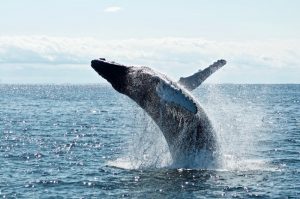- The Lifespan of Osteoclasts: How Long Do They Live?
- What is Monkfish average lifespan?
- What is Amberjack average lifespan?
- What is Sturgeon average lifespan?
- What is Barramundi average lifespan?
- What is Wahoo average lifespan?
- What is Shark average lifespan?
- What is Redfish average lifespan?
- What is Marlin average lifespan?
- What is Pompano average lifespan?
- What is Rainbow Trout average lifespan?
- What is Swordfish average lifespan?
- What is Anchovy average lifespan?
- What is Grouper average lifespan?
- What is Halibut average lifespan?
- What is Carp average lifespan?
- What is Pike average lifespan?
- What is Flounder average lifespan?
- What is Tilapia average lifespan?
- What is Sardine average lifespan?
Why Did Whales Trade Legs for Tails? The Aquatic Advantage

Whales, the majestic giants of the oceans, capture our imagination with their size and grace. But their most striking feature – their powerful tails – hides a surprising evolutionary story. Millions of years ago, whales had legs and walked on land! So how and why did these landlubbers become the ocean’s ultimate rulers?
Evolutionary Journey: From Land to Sea
Fossil evidence suggests whales share a common ancestor with land mammals like hippos and even hoofed animals. Around 50 million years ago, these early whale ancestors began venturing into water, possibly in search of food or to escape predators. Over time, natural selection favored traits that suited an aquatic lifestyle.

The Aquatic Advantage
The switch to water offered several advantages:
- Buoyancy – water supports weight, allowing whales to grow much larger than any land animal. This size advantage helps them store more energy for deep dives and long migrations.
- Streamlined Body – legs became cumbersome underwater. A tail fluke provided efficient propulsion, while a sleek body shape minimized drag.
- Insulation – blubber, a thick layer of fat, replaced fur for warmth in the colder ocean depths.

Adaptive Trade-offs
This transition wasn’t without its challenges. Whales lost the ability to breathe air directly and developed blowholes to expel stale air and take in fresh oxygen at the surface. They also gave up the flexibility of limbs, relying on flippers for balance and steering.
Ecological and Evolutionary Implications
The evolution of whales from land to sea is a remarkable example of adaptation. It highlights how organisms can dramatically change form to thrive in a new environment. Whales now dominate the vast ocean ecosystems, playing crucial roles in nutrient cycling and maintaining food webs.

Conservation Considerations
Whales face new challenges today. Threats like pollution, habitat loss, and entanglement in fishing gear endanger their populations. Understanding their evolutionary history and ecological importance is crucial for effective conservation efforts. Protecting these giants of the deep ensures the health of our oceans and the continuation of a remarkable evolutionary journey.
Conclusions
Whales didn’t trade legs for tails in a single step. Over millions of years, natural selection gradually transformed them into the magnificent aquatic creatures we know today. Their story reminds us of the power of adaptation, the constant reshaping of life on Earth, and the responsibility we have to conserve these incredible animals.



